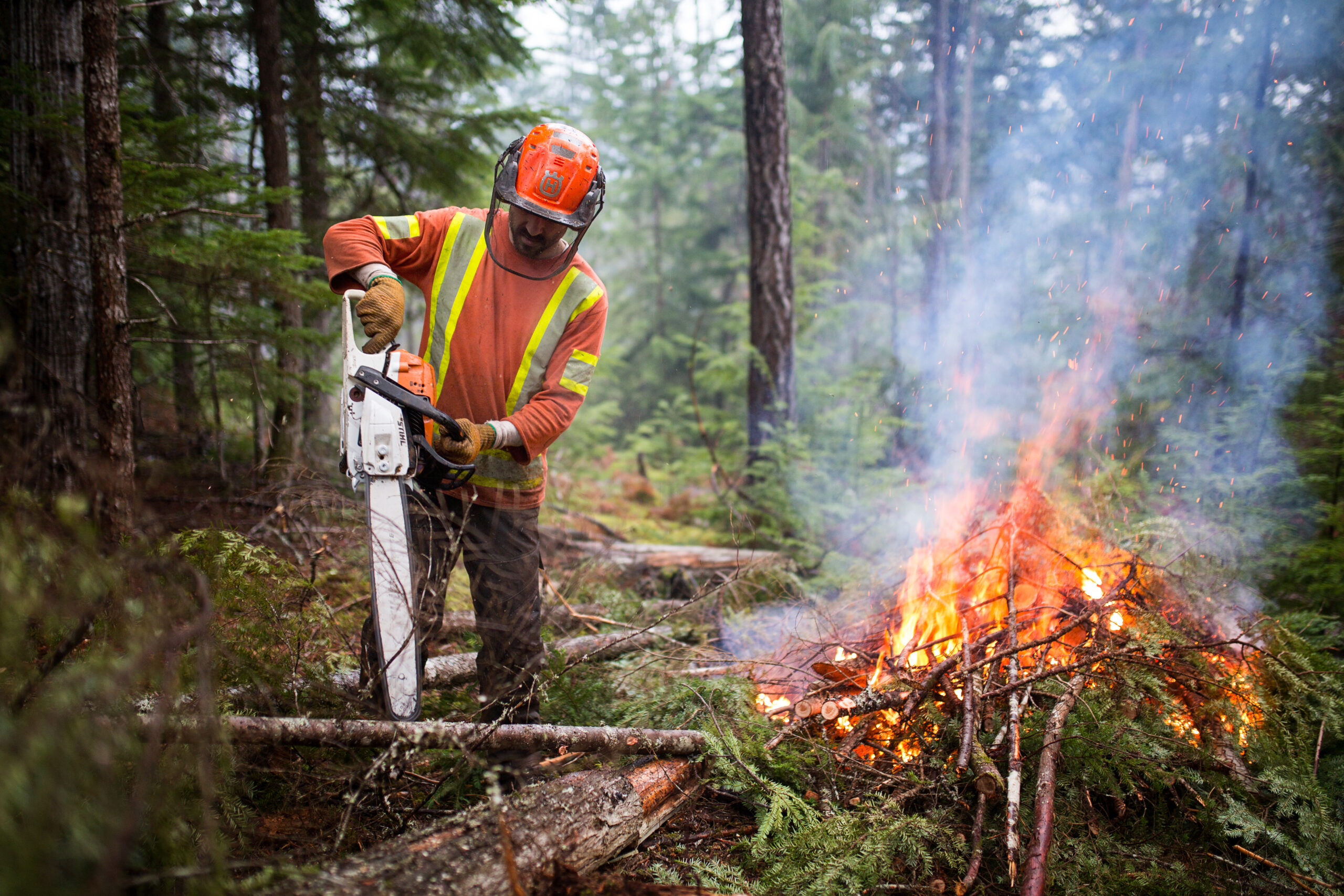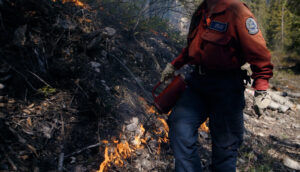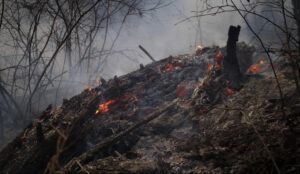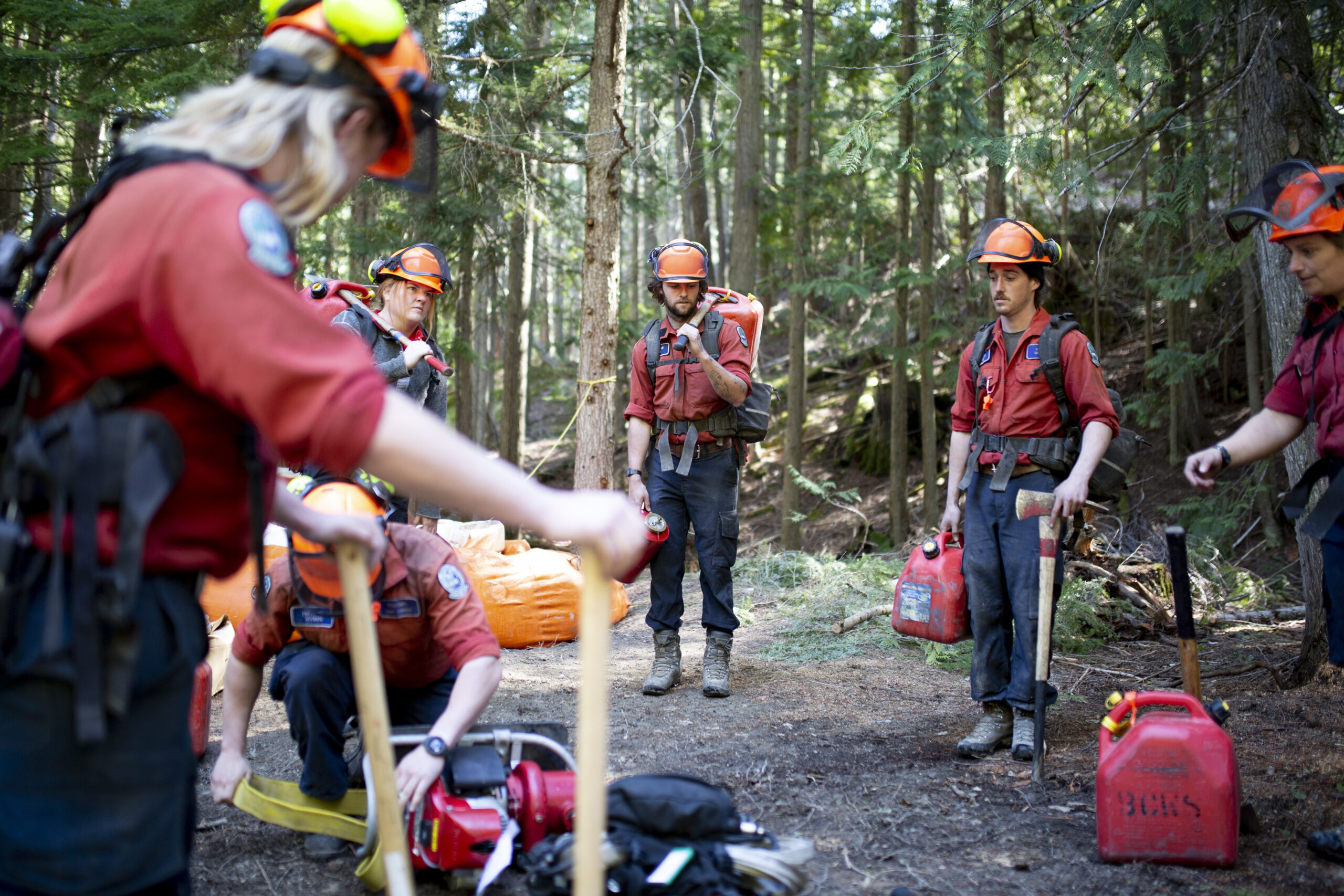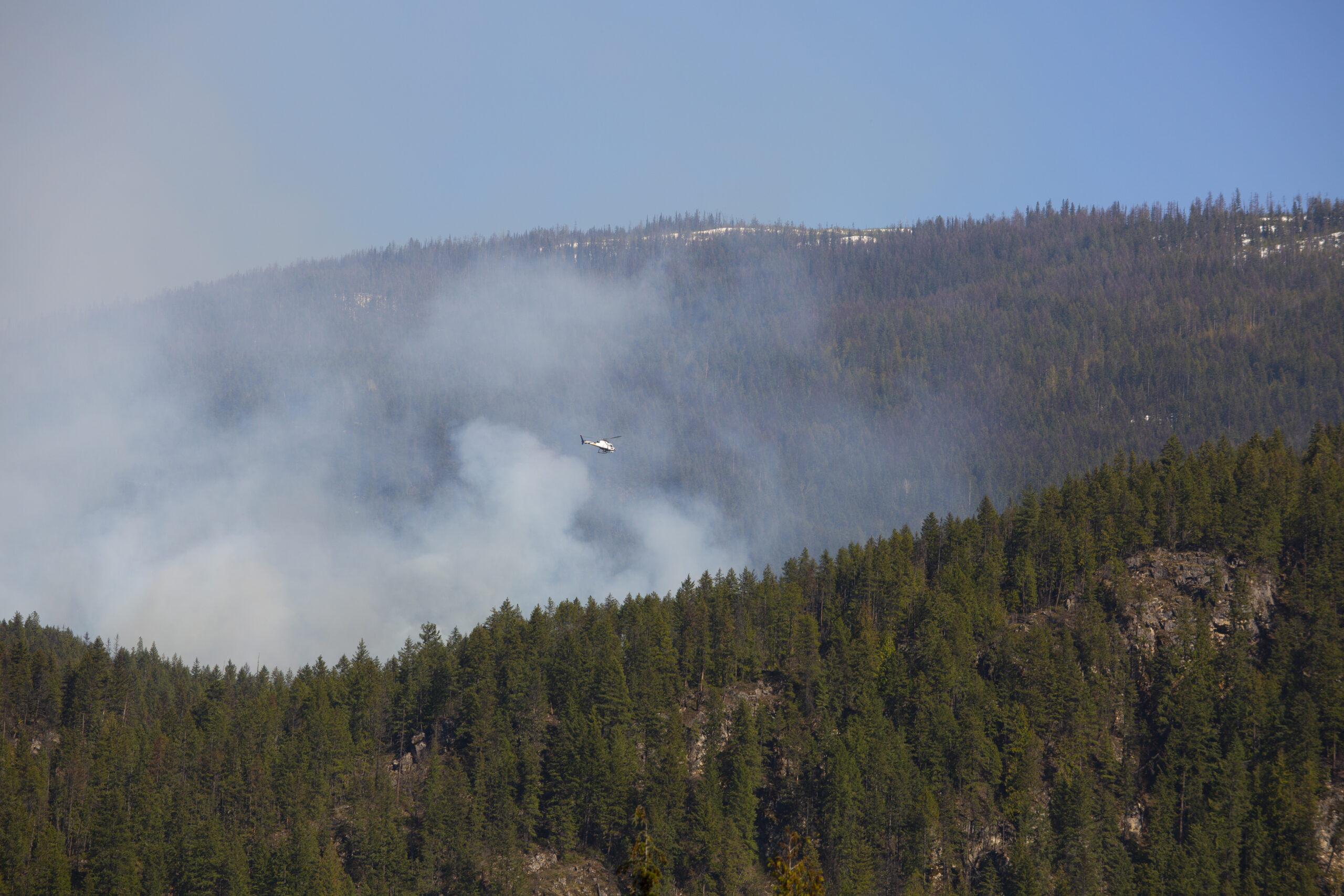Slocan Valley, B.C. – in a world increasingly threatened by wildfires and climate change, a forest cooperative has taken proactive measures to safeguard its community and surrounding natural resources. The Slocan Integral Forestry Cooperative (SIFCo) embarked on the journey of wildfire risk reduction long before this work came on the general public’s radar, emphasizing the urgency of addressing this pressing issue proactively. Today, with the invaluable financial support of the Forest Enhancement Society of BC (FESBC), the forestry cooperative has made significant strides toward reducing wildfire risk, climate change adaptation and setting a remarkable example for others.
SIFCo was formed from the local community’s long-standing aspiration for local control of area forests. In response to the availability of Community Forest Licenses, SIFCo seized the opportunity and has been guided by the principles of embracing diverse perspectives and value systems of residents in relation to forestry. After obtaining approval for its Forest Stewardship Plan in January 2009, SIFCo solidified its commitment by signing a 25-year Community Forest Agreement with the Province of British Columbia in December 2011.
“As we increasingly face the impacts of a changing climate, we must take a proactive approach to managing wildfire risk,” said Bruce Ralston, Minister of Forests. “Supporting the organizations who are leading this work like the Slocan Integral Forestry Cooperative is crucial in making the fight against wildfires a year-round, dedicated activity. The Slocan Integral Forestry Cooperative has committed years to mitigating wildfire risk. With this support, they can continue to ensure our forests are resilient and our communities, homes and businesses are protected.”
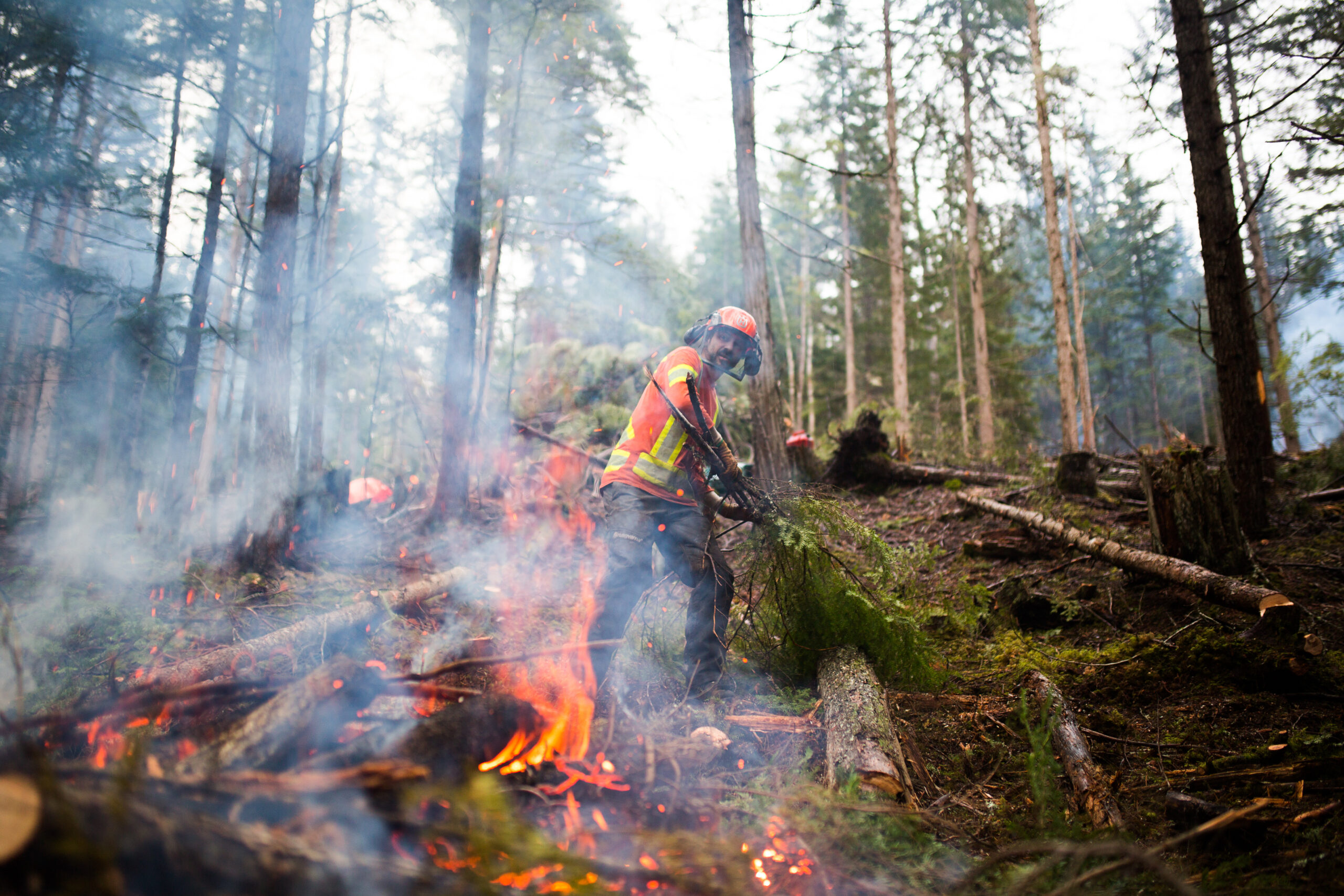
Early on, SIFCo realized the importance of landscape-level planning, which in SIFCo’s words is ‘the art and science of developing land management plans’ for tenured areas or areas the provincial government grants the rights to for harvesting timber, which included developing a first-of-its-kind Strategic Wildfire Protection Plan (SWPP) among tenure holders in B.C. In 2017, SIFCo looked to FESBC for funding support to implement their Landscape-Level SWPP and since then, a total of $2.25 million has been granted from FESBC to SIFCo for wildfire mitigation work.
According to Stephan Martineau, Manager of SIFCo, “We have made significant progress toward completing our ground-breaking plan which aims to mitigate wildfire risks and better protect the region’s cherished natural resources. FESBC’s support has been instrumental in our progress toward landscape-level wildfire mitigation, ecosystem enhancement, and climate change adaptation. Their commitment to our vision has eliminated obstacles and paved the way for a resilient future.”
Photo credits: Rachel Bone.
The work undertaken by SIFCo through FESBC funding has essentially created and/or been part of creating over 1,000 hectares of fuel-managed areas, leaving behind a more resilient forest landscape and helping better safeguard both the community and the environment.
Part of the planning involved designating 12 specific areas called Fuel Management Zones in strategic locations along potential paths where fires could spread. These areas were identified using a tool called FlamMap, a desktop application also used by the US Forest Service. FlamMap allowed SIFCo to input data and virtually simulate fires, providing a realistic understanding of fire dynamics based on specified conditions such as aspect, slope, moisture content, temperature, and wind speed. By harnessing this technology, SIFCo was able to strategically focus its treatment zones in areas where wildfires were more likely to travel and where treatments could reduce wildfire behaviours, ensuring effective wildfire mitigation and protection for the community and its surroundings.
These Fuel Management Zones act as anchor spaces that separate potential fuel sources from infrastructure and can cover hundreds of hectares, the zones are invaluable in the event of a wildfire. Within these zones, SIFCo uses four different approaches to manage the vegetation, including restoring the natural balance of the ecosystem through prescribed burns.
According to Martineau, landscape-level planning integrates fire risks into resource management decisions, acknowledging the role of wildfires in the ecosystem. Drawing from landscape ecology, which examines the flow of life, materials, and energy in landscapes, strategic options like fuel reduction, strategic fuel breaks, and resilient forest types are considered.
“Understanding how human actions shape landscapes and recognizing the significance of wildfires in managing forests is also vital for creating communities resilient to fire,” stressed Martineau. “With climate change predictions pointing to a rise in wildfires, it’s crucial that we change the way fire spreads through the forest by reducing fuel loads now. This is the key to preserving the beautiful forests we cherish for generations to come. As a forestry cooperative, we believe it’s our duty to care for the land in a way that benefits us now and ensures a better future for all.”
A key part of the work undertaken by SIFCo is focused on climate change adaptation which SIFCo has wholeheartedly embraced, resulting in a comprehensive transformation of its forestry operations. Its unwavering commitment to this cause has made climate change adaptation the guiding principle in every aspect of its forestry endeavours. “We have been proactive in applying a holistic response to rapidly changing climate conditions in our bioregion. We try to foresee where we will need to be 10 to 20 years from now, and then we implement — both as an organization and in our relationship with the land base we steward — actions in the present that will prepare the ground for a resilient future,” explained Martineau.
Photo 2: Post burn regeneration from the 2018 Winlaw Creek prescribed burn taken 3 months after the burn;
Photo 3: SIFCo type 2 treatment post harvest photo.
Photo credits: Rachel Bone.
SIFCo’s foresight has meant they are already implementing advanced forestry management practices including strategic Wildland Urban Interface re-treatment. “Now that we have created these 12 strategic Fuel Mitigation Zones, we need to maintain them,” says Martineau. This approach involves SIFCo setting aside a budget to implement maintenance re-treatments 7 to 10 years after the initial treatment, effectively managing small coniferous regeneration, and ensuring cost-effective fuel management while preserving previous investments. The good news is that re-treatment so far has cost an average of 15% of what the initial investment was.
“The lesson here is that the initial investment is critical, but once you have made it, the cost of maintaining the work is dramatically reduced. Very few companies have been at this for 15 years, so our data is very encouraging in terms of both industry and government investments in fuel mitigation,” concluded Martineau.
“It is impressive that SIFCo is already at this stage where they are proactively funding and implementing their own re-treatment program,” said Brian Watson, RPF, Operations Manager with FESBC. “Their efforts not only demonstrate a cost-effective strategy for community protection but also serve as an impressive demonstration of how a region can approach landscape-scale climate change adaptation and wildfire preparedness. The evolution of SIFCo’s exemplary work sets a valuable precedent for others implementing wildfire risk reduction programs throughout the province.”
FESBC would like to gratefully acknowledge the financial support of the Province of British Columbia through the Ministry of Forests.

